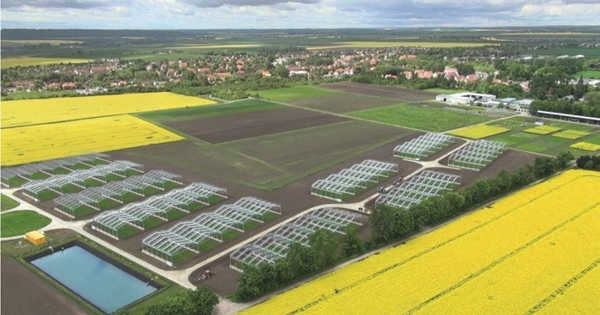Global dimming is the observed decrease in global direct irradiance at the Earth’s surface since systematic measurements began in the 1950s. The effect varies by location, but it is estimated to be on the order of a 4–20 percent reduction worldwide. Global dimming is thought to be caused by an increase in particulates or aerosols in the atmosphere, such as sulfate aerosols, as a result of human activity. It has disrupted the hydrological cycle by reducing evaporation and, in some areas, may have reduced rainfall.
Researchers used decades of measurements of earthshine – the light reflected from Earth that illuminates the surface of the Moon – to discover that Earth’s reflectance has decreased significantly over the last two decades. The Earth now reflects about half a watt less light per square meter than it did 20 years ago, with the majority of the reduction occurring in the last three years.
According to a new study, the brightness of the Earth has decreased due to warming ocean waters. According to a new study published in the AGU journal Geophysical Research Letters, the Earth is now reflecting about half a watt less light per square meter than it did 20 years ago, with the majority of the drop occurring in the last three years of earthshine data.
Researchers used decades of measurements of earthshine the light reflected from Earth that illuminates the surface of the Moon as well as satellite measurements to find that there has been a significant drop in Earth’s reflectance, or albedo, over the past two decades.
That equates to a 0.5 percent decrease in Earth’s reflectance. The Earth reflects approximately 30% of the sunlight that falls on it.
“The albedo drop was such a surprise to us when we analyzed the last three years of data after 17 years of nearly flat albedo,” said Philip Goode, a researcher at New Jersey Institute of Technology and the study’s lead author, referring to earthshine data collected by the Big Bear Solar Observatory in Southern California from 1998 to 2017. When the most recent data was combined with previous years, the dimming trend became clear.
According to the American Geophysical Union, Earth’s warming oceans are causing fewer bright clouds to reflect sunlight back into space. As a result, more heat reaches the Earth’s surface. The extra heat will, presumably, result in even warmer oceans. Many scientists had hoped for a different outcome. They hoped that a warmer Earth would result in more bright clouds, higher albedo (reflectivity), and more heat reflected away. According to them, this outcome would have helped to moderate warming and balance the climate system. However, their results show that the opposite is true.

The net sunlight reaching the Earth is affected by two factors: the brightness of the Sun and the reflectivity of the planet. The researchers observed changes in Earth’s albedo that did not correlate with periodic changes in the Sun’s brightness, implying that changes in Earth’s reflectiveness are caused by something on the Earth.
According to satellite measurements taken as part of NASA’s Clouds and the Earth’s Radiant Energy System (CERES) project, there has been a decrease in bright, reflective low-lying clouds over the eastern Pacific Ocean in recent years.
That’s the same area, off the west coasts of North and South America, where sea surface temperatures have risen due to a reversal of a climatic condition known as the Pacific Decadal Oscillation, which has likely links to global climate change.
The Earth’s dimming can also be seen in terms of how much more solar energy is captured by the Earth’s climate system. Once this significant additional solar energy has entered the Earth’s atmosphere and oceans, it may contribute to global warming because the extra sunlight is of the same magnitude as the total anthropogenic climate forcing over the last two decades.
“It’s actually quite troubling,” said Edward Schwieterman, a planetary scientist at the University of California, Riverside, who was not involved in the new study. Many scientists had hoped for a long time that a warmer Earth would result in more clouds and higher albedo, which would then help to moderate warming and balance the climate system, he said. “However, this demonstrates the inverse is true.”
The Earth’s dimness may worsen in the coming decades as well. The Intergovernmental Panel on Climate Change predicted in 2013 that the average global sea temperature could rise by up to 7.2 degrees Fahrenheit by 2100.
















